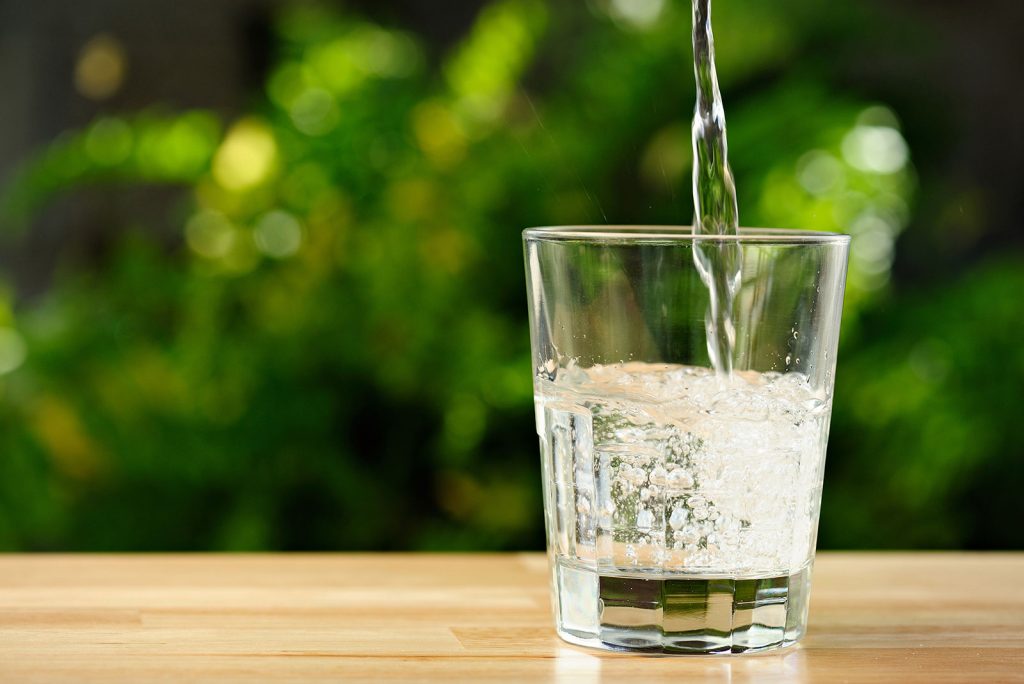
Parental Note: This experiment can be done independently by children 9 years of age and older. Younger children can complete this experiment but will need help from an adult. This experiment should be done on a sunny day with warm temperatures.
Experiment Overview:
Think about all the times each day you use clean water. Some examples include:
- clean drinking water
- washing the dishes
- cleaning dirty clothes
- taking a shower
- boiling water for a pasta dinner
Come to think of it, the list goes on and on! Now imagine your day without clean water. What would you drink? How would you cook? What would your quality of life be like?
Did you know, you can harness the sun’s renewable energy to purify contaminated water? With the sun’s heat and the help of the water cycle, we can take dirty, undrinkable water and purify it through the use of a solar still.
A solar still, or solar filtration system, is a device that uses the sun’s heat to create condensation, which is collected for use as a clean water supply. Essentially, the sun supplies the energy needed to drive the water cycle (evaporation, condensation, precipitation) and in turn, usable water is created.
Experiment Materials:
- (1) Small glass or plastic container (to collect purified water; must fit inside larger container)
- (1) Large glass or plastic container (to place contaminated water; must be large enough to house smaller container)
- (1) Food coloring color, blue or any preferred color
- (8) oz. (or 1 cup) of water
- (1) Piece of clear plastic wrap, large enough to cover your large container
- (1) Rubber band, or alternatively tape
- (1) Small rock
- (1) Small, clean, heavy item like paperweight to hold small container if necessary
Experiment Process:
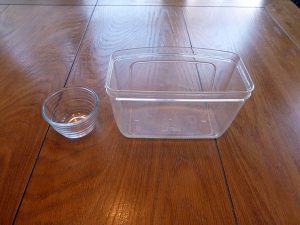
Step 1
The first thing you will need to do for this experiment is to pick a large container to fill with your contaminated water, and a smaller container to collect the purified drinking water. You need to make sure your smaller container will fit into the larger one with some room to spare on the top and sides.
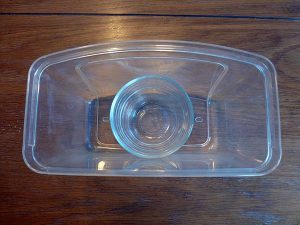
Step 2
Fill your large container with a thin layer of water, approximately 1 inch deep. Add a few drops of food coloring to your water to show it is no longer pure. The food coloring in this experiment is acting as our impurities and will be a way for us to visually understand the purification process.
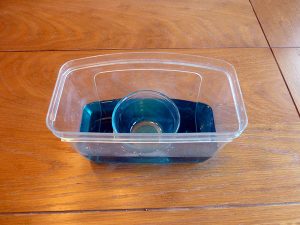
Step 3
Place your smaller empty container in the middle of your larger container. If the container is trying to float away, place a clean heavy item, like a paperweight, inside to weigh the container down, or use a heavier container. The smaller container will act as the collection agent for our purified water. Make sure none of the water with food coloring gets inside your small container.
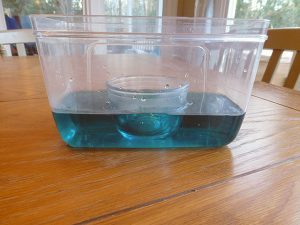
Step 4
Loosely place the plastic wrap on top of your large container making sure to cover the entire top. Let some of the plastic wrap fall over the sides of your large container so that you can seal everything tightly.
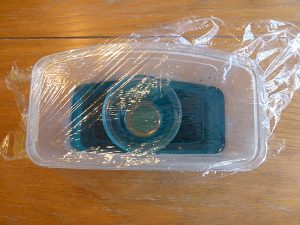
Step 5
Use a rubber band to secure the plastic wrap in place around the rim of your larger container. If your container is too big, use tape to hold the plastic wrap in place.
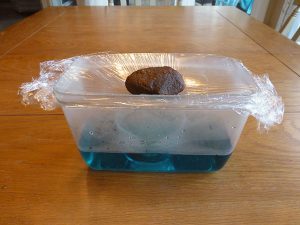
Step 6
Use a rock to create a dip in your plastic wrap right over your small container; this dip will cause the condensation that collects on your plastic wrap to roll down to the lowest point and drop into the container.
Step 7
Set your solar still outside in a very sunny spot making sure to check on it periodically to keep it in the best position to utilize the sun’s heat.
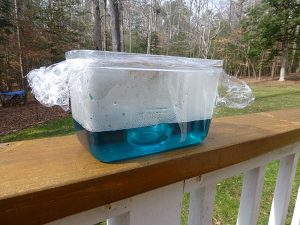
Step 8
Observe your solar still filtration system throughout the day to see how much water is collecting in your small cup. You may want to leave your still outside for multiple days to allow the sun to work its magic.
Conclusions:
Over the span of a couple of days, you should have noticed a few things happen to your solar still:
- Your small collection container should have slowly filled with clean drinking water that did not have any of your food coloring in it; the water will be purified (distilled).
- You should have also observed that your plastic wrap was constantly littered with small droplets of condensation (water droplets) that would make their way to the lowest point (your rock on top of the plastic wrap) and drop into the small container.
- You should have also noticed that the water with the food coloring was decreasing as the evaporation and condensation process (the water cycle) occurred within your solar still.
Why did this happen?
Your solar still worked by using the sun to heat the water located in your larger container (the contaminated water). The heated water then evaporated, and as the water collected and cooled, it condensed into clean water droplets. The water then made its way to the lowest spot on the plastic wrap, and dropped into the collection container. The contaminates, in this case the food coloring, stayed behind in the large container. The smaller container then held the purified water supply that can be used for your activities.
We can explore additional designs for solar filtration stills and see how other people around the world have created solar stills to clean water for their communities. Maybe you will be inspired to create your own design and learn more about the sun’s amazing ability to purify water (along with the water cycle) on a global scale. Good luck exploring!
Study questions
- How does a solar still filtrations system work?
- How does the water cycle purify water?
- How does the sun play a role in purifying the water?
- When would you use a solar filtration system in the real world?
- Do you think there are other ways to clean water using the sun?
- Who were the first people to use a solar still?
Extension:
Parents, feel free to make a few variations to the Solar Still experiment
- Add a spoonful of dirt to your contaminated water to truly show the purification process.









